Off-road enthusiasts who crave excitement, discovery, and adventure have come to appreciate UTVs. These vehicles provide many unique opportunities to engage with nature and enjoy the great outdoors in a way that conventional transportation cannot.

As a self-professed UTV fan, I can attest to the exhilaration and joy that these vehicles bring. UTVs have grown in popularity for various reasons, including the wind in your face as you ride over rough terrain, the adrenaline rush of negotiating steep hills and rocky paths, and the companionship of sharing the experience with friends and family.
However, UTVs are not just for thrill-seekers. They can be utilized for various tasks and are also very practical vehicles. UTVs provide a dependable and effective solution whether you need to transport equipment on a farm or ranch, explore remote wilderness areas, or traverse challenging terrain for work or pleasure.
UTVs come in various sizes and shapes, from small utility vehicles to powerful sports UTVs. Because of this, they are adaptable to different requirements and preferences.
This article will examine the various aspects of UTVs, including their types, features, applications, cost, and maintenance needs. This overview will offer helpful insights and information to help you better understand and appreciate these remarkable machines, whether you are an expert UTV rider or a newcomer to the world of off-road vehicles.
Key Components and Features on UTVs.
UTVs have several essential parts and features that make them versatile in their uses and well-suited for off-road driving. The following are some of the most crucial components and features to consider:
Engine and Transmission
UTVs have either gas or diesel engines, typically with displacements of 400 cc to 1000 cc or more. Although some models may also offer manual transmissions for more precise control, the engines frequently utilize automatic transmissions for smooth shifting and easy handling.
UTV engines are designed to deliver ample power and torque for off-road applications. Depending on the model, they are air-cooled or liquid-cooled and often feature multiple cylinders to enhance performance. The performance and fuel efficiency of modern UTVs are improved by the widespread use of fuel injection.
In a UTV, the transmission transfers power from the engine to the wheels, giving the driver control over the vehicle’s speed and direction. Most UTV transmissions are automatic, allowing the driver to easily switch between forward and reverse or change gears by pressing a lever or button. Some models may also come with a manual transmission to control the vehicle’s speed and performance.
UTV transmissions feature several gear ratios, in addition to the transmission type, to optimize performance on various terrain types. High gears are preferable for cruising or moving at higher speeds, whereas low gears are better for climbing steep inclines or navigating rugged terrain.
Suspension
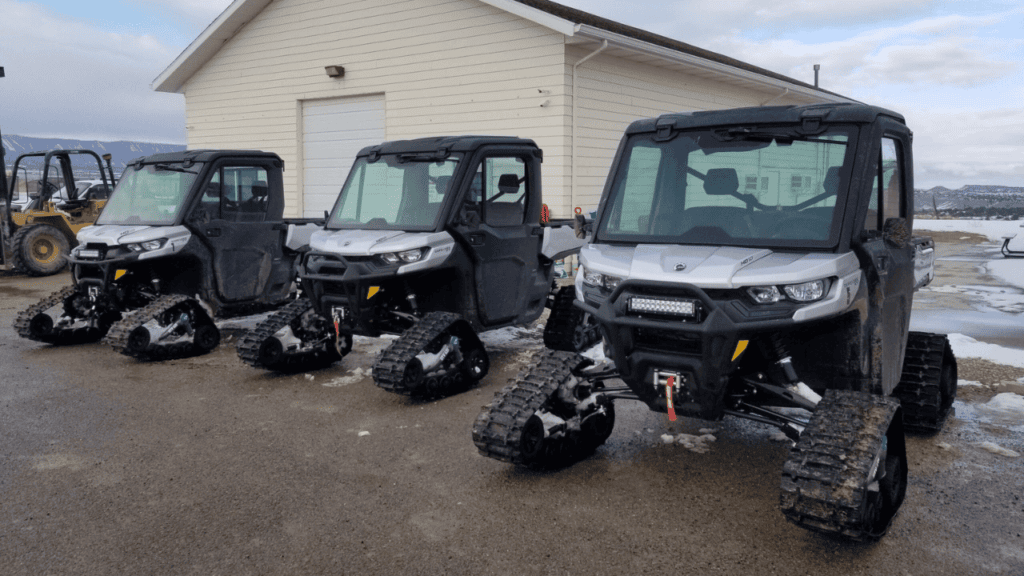
UTV suspension is crucial for a comfortable ride and superior handling over rugged terrain. Shocks, springs, and control arms are some of the components that make up the suspension system; they all work together to keep the vehicle stable and in control while absorbing bumps and shocks.
UTV suspension systems come in various configurations, depending on the type and intended purpose. Some models have an independent front suspension and a solid rear axle, while others may have independent suspension on all four wheels. UTVs with independent suspension often offer a smoother ride and better handling over rugged terrain because each tire can move independently to absorb bumps and maintain grip.
Coil-over, air, and hydraulic shocks, as well as other types of shocks, are all included in UTV suspension systems. The most popular type of shock is coil-overs, which can be adjusted to function better on various types of terrain. Hydraulic shocks are often utilized on more heavy-duty UTVs to enable better performance in challenging areas, while air shocks can also be adjusted for different terrain types and sometimes provide a smoother ride.

When selecting a UTV, it is important to consider the suspension because it has a significant impact on the vehicle’s performance and ride quality. The type and quality of the suspension system and any adjustable features that may be offered should be taken into account when choosing a UTV.
Chassis and Body
A UTV’s chassis is a frame or roll cage that provides occupants with structural support and safety. Often made of steel, the chassis is built to last and withstand the rigors of off-road operation.
Typically constructed of plastic or fiberglass, a UTV’s body is lightweight and resistant to damage from obstacles like rocks, branches, and other impediments found on off-road trails.
The chassis and body of a UTV contribute to the vehicle’s handling and performance while protecting the occupants. The body helps maintain the vehicle’s center of gravity low to the ground for better stability and control, while the chassis provides a stable base for the suspension system.
Various chassis and body designs may be employed, depending on the vehicle’s intended purpose. A UTV designed for work might appear more utilitarian, with features like cargo beds and towing capacity, while a UTV made for recreation might have a more aggressive and sporty appearance.
The body, chassis, and any modifications can be added to enhance utility or performance. With the right chassis and body design, a UTV can offer the driver and passengers a safe, comfortable, and capable off-road experience.
Tires and wheels
A UTV’s wheels and tires are essential components that provide traction and stability on uneven surfaces. Large, knobby tires that offer maximum grip and traction, especially in muddy or rocky terrain, are commonly fitted on UTVs.
Depending on the model and the vehicle’s intended use, the size and type of tires used on a UTV can vary. Some UTVs may have smaller, more flexible tires for improved mobility, while others may have larger, more robust tires for heavy-duty work or recreational use.
A UTV’s wheels are usually made of steel or an aluminum alloy, and they are designed to be sturdy and resilient enough to withstand the demands of off-road use. To help prevent corrosion and other types of damage, the wheels may be painted or coated with a protective finish.
The size and type of UTV tires and wheels should be considered when making a selection. The right tires and wheels can significantly improve the performance and handling of the UTV on rough terrain. They can also alter the vehicle’s appearance and style.
When choosing a vehicle, UTV tires and wheels should be carefully considered. With the appropriate tires and wheels, a UTV can deliver exceptional performance and handle various off-road situations.
Seats and cargo space
UTVs have a range of seating arrangements, from two- to four-seaters and beyond. The vehicle’s intended function primarily dictates the number of seats; recreational UTVs frequently have more seats to accommodate group outings, while UTVs designed for work may have less space to increase cargo capacity.
A UTV’s seating is usually designed for support and comfort, with padded, contoured seats that offer a smooth ride. To accommodate riders of various sizes, some UTVs may also include adjustable seats that can be moved forward or backward.
UTVs have ample storage space and seating capacity, making it possible to transport tools, equipment, and other items. The cargo capacity may vary depending on the model and intended use of the vehicle. Some UTVs have a small cargo bed in the back, while others have larger, more durable cargo beds or racks.
A UTV’s cargo bed is generally made of robust materials like steel or heavy-duty plastic, and it may also have additional features like cargo nets or tie-down points to keep cargo secure while being transported. Some UTVs may also be capable of towing, allowing them to pull trailers or other equipment.
When choosing a UTV, consider the seating and cargo capacities, as well as any optional extras that may be offered to enhance the vehicle’s performance and functionality. Depending on the seating arrangement and cargo capacity, a UTV can be used for various tasks, from off-road work and farming to leisure activities like camping and hunting.
Accessories and Upgrades
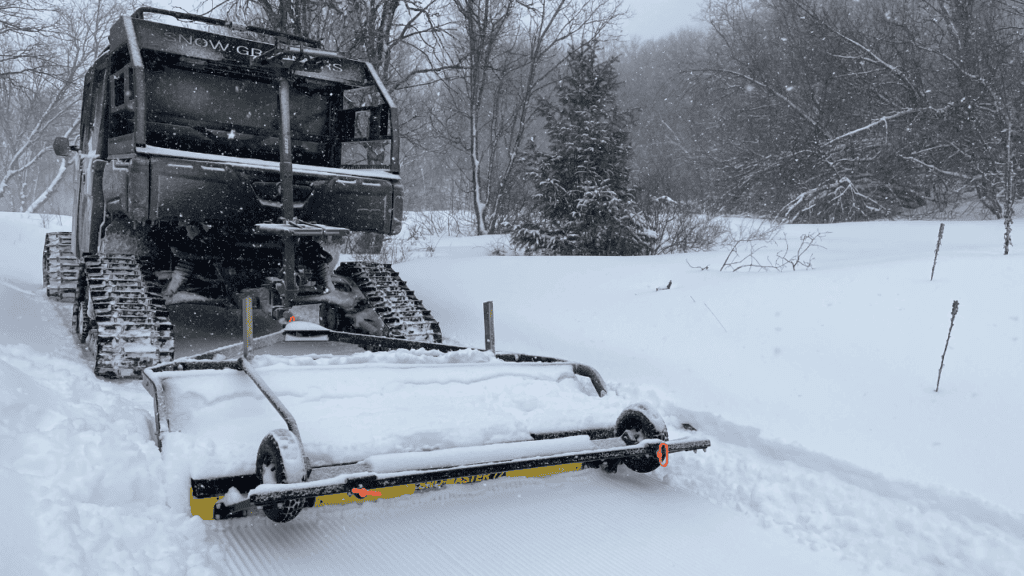
UTVs typically come with various modifications and extras that can enhance their functionality and capabilities. Examples of accessories include winches, snow plows, and luggage racks, while upgrades may consist of performance exhaust systems, larger tires, and improved suspension components.
Standard UTV attachments like winches can help rescue the vehicle if it gets stuck in snow or mud. Snow plows are common attachments for UTVs used to clear trails or remove snow. Cargo racks are excellent for hauling extra gear or equipment, while rooftop racks can carry larger items like kayaks or bicycles.
Examples of upgrades that can be made to UTVs include larger tires for better traction and stability, modified suspension components for improved performance on rugged terrain, and performance exhaust systems that can help increase the vehicle’s horsepower and torque.
Other popular UTV additions and extras can include items like LED light bars for better visibility, GPS navigation systems for off-road excursions, and music systems for added enjoyment and comfort.
It’s essential to choose high-quality items that fit the specific make and model of the UTV when considering modifications and accessories for these vehicles. Many UTV manufacturers offer a selection of add-ons and upgrades designed to fit perfectly with their vehicles and provide optimal performance and utility.
Safety Features
UTVs include a variety of safety features to protect occupants in the event of an accident or rollover. In addition to safety equipment like headlights, taillights, and turn signals, these features may comprise seat belts, roll cages, and safety nets.
One of the most critical safety features in a UTV is a seat belt, which is usually required by law in most jurisdictions. UTV seat belts are designed to keep occupants safely seated in the event of a rollover or collision.
Another crucial component of UTV safety is the roll cage. In case of a rollover, the roll cage is a structure that surrounds the occupants and serves to protect them. Typically constructed of steel or aluminum, the roll cage is sturdy and resilient enough to withstand the force of a rollover.
Safety nets are another standard component of UTVs. Made of a mesh or fabric material that encloses the passengers, the safety net helps keep them within the vehicle during a rollover.
UTVs are equipped with various safety equipment, including turn signals, headlights, and taillights, which help increase visibility and make the vehicle more noticeable to other road users.
Electronic Features
The comfort, convenience, and functionality of UTVs can be enhanced by various electronic technologies. The following are some of the most common electronic components found on UTVs:
GPS navigation: Many UTVs are equipped with GPS devices that can be used to navigate through wilderness areas and off-road trails. These systems often come with maps, waypoints, and other useful information that can help the driver navigate unfamiliar territory.
Sound systems: UTVs may have sound systems that allow music playback and other audio files. These systems can include speakers, processors, and other components designed to withstand the elements.
Bluetooth connectivity: UTVs may come with Bluetooth connectivity, which allows the driver to pair their phone or another mobile device with the vehicle’s audio system. Among other things, this feature can be used to stream music and make hands-free calls.
USB ports: Some UTVs may have USB ports that can be used to charge portable electronics while in use.
Electronic instrument displays: UTVs can be equipped with electronic instrument displays that show data such as speed, RPM, fuel level, and more for the driver. These clusters may have easily readable, programmable LCD panels.
Auxiliary lighting: To improve visibility on the trail, UTVs can be fitted with auxiliary lighting, such as LED light bars. These lights can be operated by a switch or electronic device and positioned on the vehicle’s roof or elsewhere.
Popular UTV Brands
UTV brands include manufacturers worldwide, each with advantages and specializations in creating utility task vehicles. Thanks to the wide range of market categories these businesses serve, including sport, utility, and crossover UTVs, there is a vehicle for every type of user and application. Some of the most well-known and reputable UTV manufacturers are Polaris, Can-Am, Honda, Yamaha, and Kawasaki.
These companies are renowned for their dedication to providing UTV offerings that are innovative, high-quality, reliable, and perform well. Each brand has models and features that appeal to specific customer needs and preferences.
UTV manufacturers consistently invest in research and development to introduce new technology, enhance vehicle performance, improve safety features, and address environmental concerns.
Can-Am
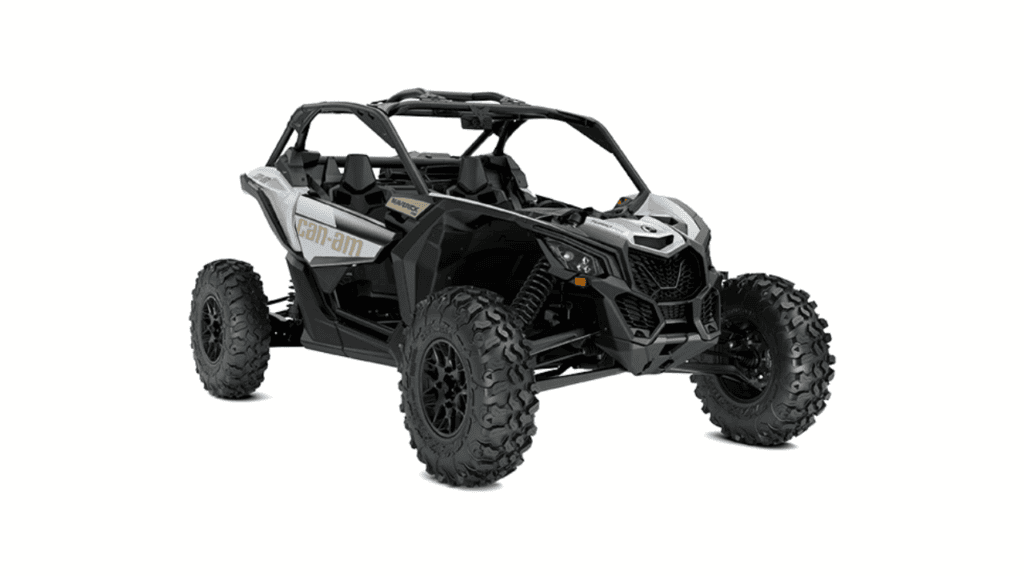
Known for its cutting-edge, high-performance UTV models like the Maverick and Commander, Can-Am is a Canadian company owned by Bombardier Recreational Products (BRP). The Maverick portfolio caters to the sport and high-performance market, while the Commander series is more practical and versatile. Can-Am strongly emphasizes cutting-edge design and technology in its vehicles, resulting in unique features and performance capabilities that lead the industry. Can-Am offers a wide range of UTVs designed for sport, utility, and crossover use to appeal to various off-road enthusiasts and professionals.
Polaris

With its wildly popular Ranger and RZR model lines, Polaris, an American company founded in 1954, has emerged as a significant player in the UTV market. Heavy-duty utility-focused UTVs are available in the Ranger series, while the RZR lineup targets off-road enthusiasts looking for high-performance recreational vehicles. Polaris aims to innovate constantly, as shown by the creation of electric UTV models like the Ranger EV. With a wide selection of UTVs, the company is renowned for its commitment to quality and performance. These include models suitable for various uses, including farming, landscaping, off-road adventuring, and sports.
Honda
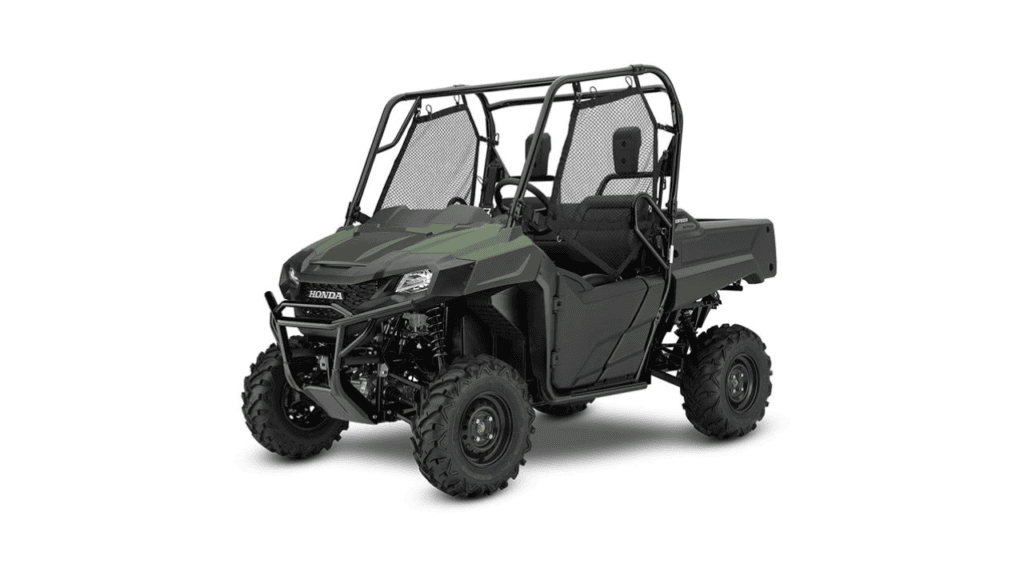
Honda, a Japanese multinational company with a long history in the auto and power sports industries, has built a reputation for making dependable and fuel-efficient UTVs. Their well-known Pioneer and Talon models best demonstrate this dedication to reliability and usability. While the Talon lineup focuses on the recreational and sport market, the Pioneer series emphasizes utility and multipurpose use. Honda’s UTVs are a fantastic option for various applications since they are constructed with a mix of performance, comfort, and practicality.
Yamaha
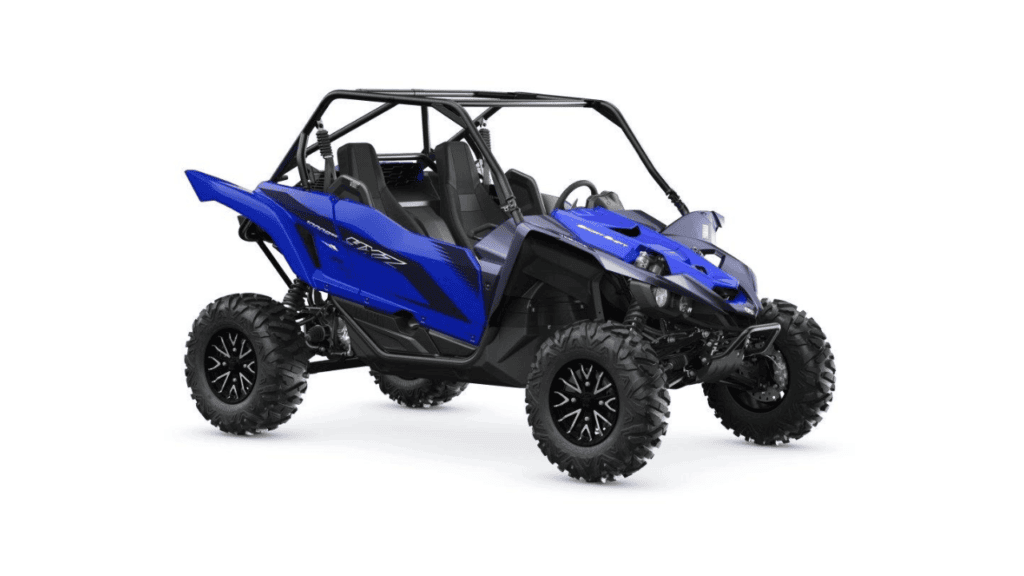
With its well-known models like the Viking and Wolverine, Yamaha, a Japanese multinational company with a wide range of products, has made tremendous progress in the UTV market. Although the Wolverine portfolio offers sporting and recreational possibilities, the Viking series provides utility-focused UTVs. Yamaha places a high value on their vehicles’ quality, comfort, and performance, leading to a selection of sport, utility, and crossover UTVs that meet various requirements and tastes. To maintain its position at the top of the market, Yamaha is dedicated to innovation and improvement.
Kawasaki
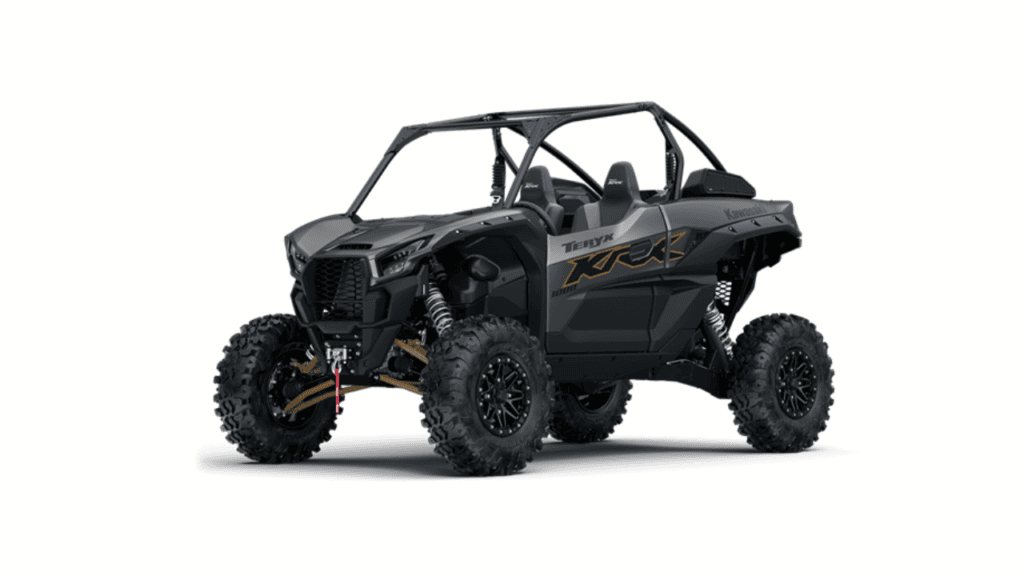
Kawasaki, a Japanese multinational company with a significant presence in the power sports sector, produces Mule and Teryx UTV, models. The Teryx series targets the recreational and sporty market with performance-focused models, while the Mule lineup offers utility-focused vehicles suited for work and heavy-duty jobs. Kawasaki provides a selection of UTVs that strike a balance between performance, toughness, and comfort, ensuring that they can satisfy the market’s changing needs. Kawasaki has become a well-known name in the UTV market, focusing strongly on creativity and ongoing improvement.
Applications
Agriculture
A practical task in the agricultural industry, vehicles have evolved into a necessary instrument that helps with various farm operations. By streamlining daily tasks, they have transformed farm management and enabled farmers to work more productively and efficiently. UTVs are flexible and adaptive, able to manage crops, take care of livestock, and maintain properties.
Using UTVs for agricultural purposes has several advantages, including their potential to be equipped with specialist equipment. Farmers can add various attachments to their UTVs, including plows for tilling the soil, seeders for planting, and sprayers for protection. These add-ons improve UTV functioning and reduce the need for extra equipment, saving time and money.
Another crucial component of agricultural operations is transportation because farmers need to transport workers, equipment, and supplies across large farms. Farmers can transport all they need for their daily duties with UTVs, which have plenty of cargo space and the ability to haul items. They are suited for crossing rough terrain and difficult circumstances because of their sturdy design and off-road capabilities, guaranteeing that farmers can access even the most isolated sections of their property.
UTVs have revolutionized the agricultural industry by reducing farm management, boosting output, and improving overall effectiveness. UTVs have become a vital asset in the farm industry thanks to their adaptability, versatility, and off-road characteristics, enabling farmers to operate more appropriately and effectively.
Hunting
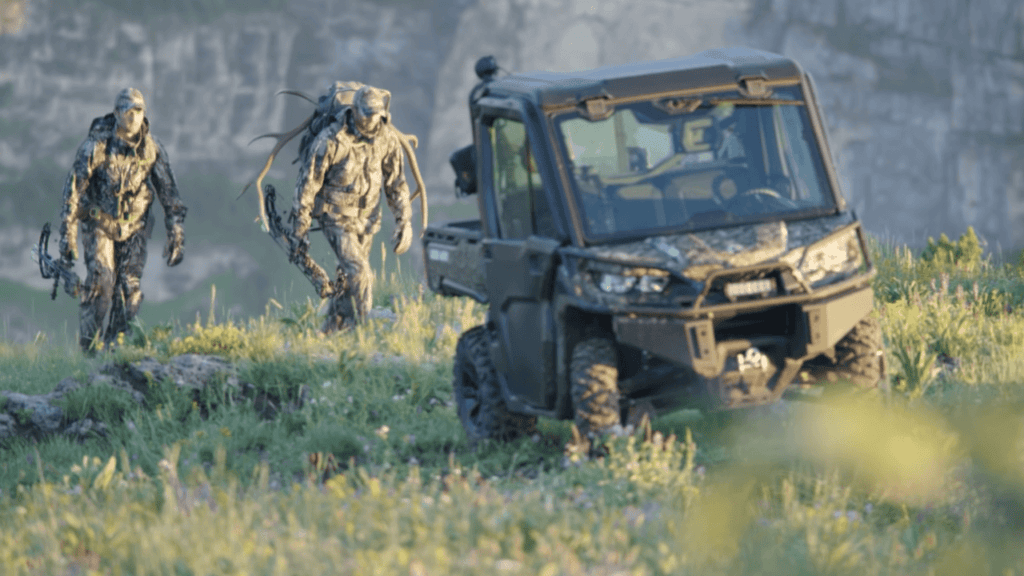
Hunting techniques have been significantly impacted by utility task vehicles. They can reach inaccessible sites and easily navigate challenging terrain, making their off-road prowess and agility significant assets for hunters and wildlife specialists.
One of the main advantages of employing UTVs for hunting and wildlife management is the flexibility to maneuver through rugged terrain. Hunters can go far into the wilderness to hunt game, and wildlife experts can get to remote locations to research and watch wildlife populations. UTVs are perfect for exploring off-the-beaten-path because they can tackle challenging terrain, steep inclines, and a variety of weather situations with ease.
Also, UTVs have a lot of storage space, which is necessary for moving supplies, wildlife, and hunting gear. UTVs can carry everything required for a fruitful hunting adventure or wildlife management operation because of their roomy cargo bays and towing capability. This includes tools like blinds, decoys, food, and even portable tree stands, making hunting and wildlife management tasks more effective and well-organized.
UTVs’ effective transportation, adaptable functionality, and dependable off-road performance have substantially improved hunting and wildlife management. These vehicles have developed into essential instruments for hunters and wildlife specialists, making it more straightforward for them to explore inaccessible areas and complete numerous tasks related to their respective professions.
Infrastructure and construction industries
Utility Task Vehicles have become widely used, efficient tools that improve processes and boost productivity in the infrastructure and construction industries. Their strength, versatility, and ability to maneuver across rugged terrain make them powerful tools in various infrastructure and construction projects.
The ability of UTVs to reach hard-to-reach regions on construction sites is one of the main benefits of using them in infrastructure and construction projects. Traditional vehicles frequently find it challenging to drive around uneven terrain, debris, and confined spaces, but UTVs can effortlessly do so, ensuring that employees and equipment can go where they need to go without difficulty.
Construction and infrastructure projects also require crew transportation because workers frequently need to move quickly between several work zones. Construction teams can be safely and effectively transported using UTVs, maximizing the use of time and materials on the work site. They are perfect for handling crowded construction sites while assuring worker safety thanks to their small size and off-road prowess.
By adding specialist attachments, like blades for grading, buckets for moving materials, or drill rigs for excavation, UTVs can also be customized for particular construction activities. This adaptability reduces the need for extra equipment and lowers total expenses by enabling construction experts to do various tasks with a single vehicle.
Recreation and Sport
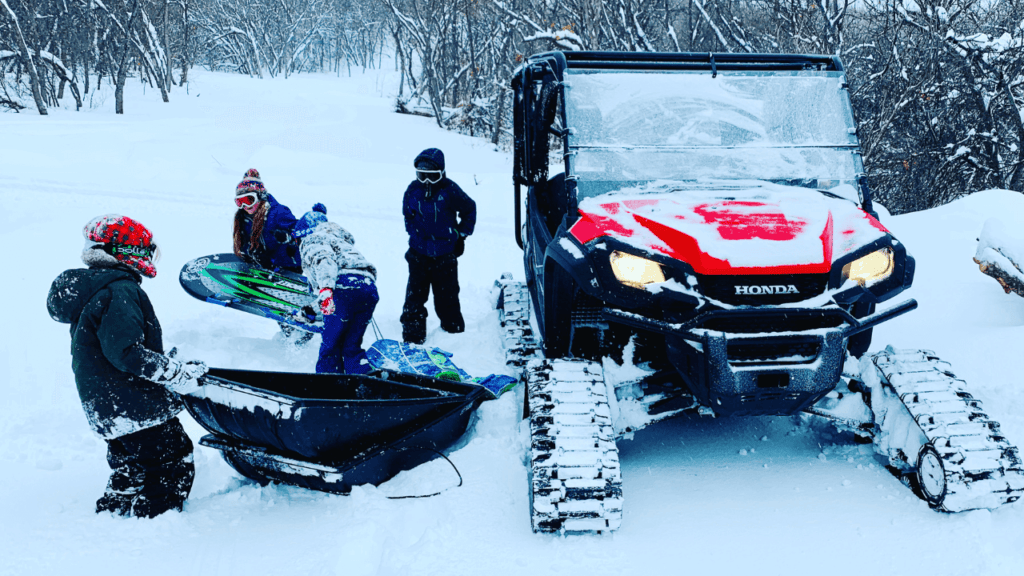
In the worlds of recreation and sport, utility task vehicles have become incredibly popular, giving enthusiasts thrilling chances to experience the great outdoors and take part in off-road adventures. UTVs have changed how people engage with the environment by allowing them to participate in various previously inaccessible activities and experiences.
UTVs’ capacity to navigate rugged terrain is one of their most attractive features in recreational and sports situations. Off-roading enthusiasts can experience the thrill of controlling their UTVs through various obstacles as they explore multiple environments, from woods and sand dunes to mountains and riverbeds.
UTVs have also been shown to be valuable tools for social gatherings and group outings. They let people enjoy off-roading together and are ideal for group activities, getaways for the family, and guided excursions due to their numerous seating possibilities. By offering a unique method of transportation that blends the excitement of off-road driving with the usefulness of carrying passengers and equipment, UTVs can improve outdoor getaways.
UTV-specific off-road parks and trail networks have also been created due to the increased popularity of these vehicles. For UTV enthusiasts, these designated areas offer a secure and controlled setting where they may improve their driving techniques, learn about off-road safety, and interact with other UTV owners in a friendly and welcoming community.
Types of UTV
UTVs can be broadly categorized into three main types, each designed to cater to users’ specific needs and preferences. Understanding the differences between these types can help potential buyers make informed decisions when choosing a UTV that best suits their requirements.
Sport UTVs
Sport UTVs are designed with performance, speed, and handling in mind. These vehicles are built for those who enjoy off-road adventures and seek adrenaline-pumping experiences. Sport UTVs typically feature powerful engines, responsive suspension systems, and aggressive styling. They are engineered to tackle challenging terrains, such as sand dunes, rocky trails, and steep hills.
Sport UTVs frequently have high-tech features that boost their ability to navigate obstacles off-road, such as long-travel suspension for excellent shock absorption, high ground clearance, and durable tires for more grip. Users who value handling and performance over utility or cargo capacity might choose these UTVs.
Utility UTVs
As their name suggests, utility UTVs are made with functionality and practicality in mind. The primary goal of these vehicles is to let users do various jobs, including towing, hauling, and material transportation. Utility UTVs are best for work-related applications or property maintenance since they often have more extensive cargo beds and better towing capacities than sport UTVs.
Utility UTVs often have a stronger, more lasting design, with a reinforced frame, powerful engines, and heavy-duty suspension systems for handling demanding tasks. Utility UTVs are superior in various methods, including dependability, practicality, and versatility, even though they may be less quick and agile than sport UTVs. These vehicles are ideal for people needing a UTV for work-related chores or prioritizing utility and cargo capacity over performance.
Crossover UTVs
Crossover UTVs, often called recreational-utility UTVs, try to balance the utility and sport UTVs’ practicality and performance. These automobiles are made to satisfy people who require a multipurpose UTV that can manage both work and play. Crossover UTVs often combine features from sport and utility versions, giving consumers with various needs a well-rounded choice.
While keeping good performance and handling qualities, crossover UTVs often offer modest load capacities and towing capabilities. They might have movable suspension systems, giving customers the option to convert between sportier handling for off-road excursions and more comfortable settings for utility activities.
Maintenance of the UTV
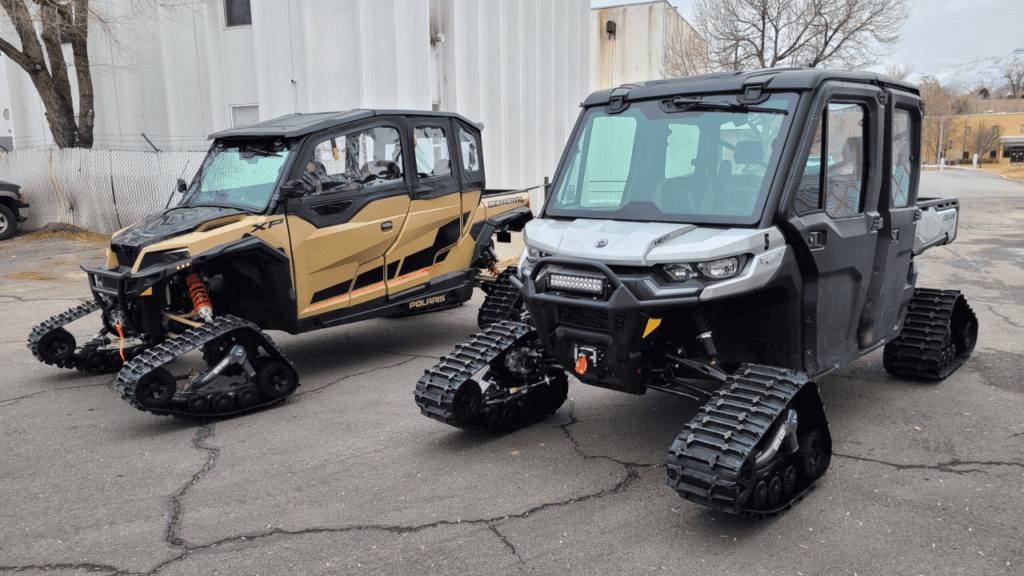
Your Utility Task Vehicle (UTV)’s durability, effectiveness, and safety depend on regular maintenance. Regular maintenance helps avoid mechanical problems, lowers the chance of breaking down, and safeguards your investment. Following are a few crucial elements of UTV maintenance:
- Regular inspections: Check your UTV periodically for any signs of damage or deterioration, such as cracks, leaks, or loosened parts. Early detection and resolution of potential worries can help avoid later, more severe issues.
- Fluid checks: According to the manufacturer’s recommendations, check and replace the engine oil, coolant, brake fluid, and other necessary fluids regularly. For the engine to operate at its best and to avoid overheating, the optimum fluid levels must be maintained.
- The manufacturer’s instructions should do cleaning or replacing the air filter. The best airflow is ensured by a clean air filter, which also shields the engine from dust, dirt, and debris.
- Check and replace spark plugs to maintain the best engine performance and energy efficiency. Increased emissions and poor engine performance can be caused by worn or clogged spark plugs.
- Brake system maintenance: To guarantee efficient braking performance, routinely check the brake system, including the pads, rotors, and fluid levels. To maintain optimal stopping power and avoid accidents, worn or broken components should be replaced as needed.
- Tire maintenance: Frequently check the condition and pressure of your tires. Properly inflated and maintained tires improve traction, handling, and overall performance. Tires should be rotated and replaced to maintain even wear and safe driving conditions.
- Maintenance of the suspension and steering system: Check the suspension and steering parts for wear or damage. Lubricate connections and bearings as necessary to reduce friction and stop premature wear. Well-maintained steering and suspension systems guarantee a smooth, stable ride and responsive handling.
- Upkeep for batteries: Keep the battery corrosion-free and spotless. Examine the cables and terminals for signs of wear and tightness. When the battery shows signs of breakdown or can no longer keep a charge, replace it.
Pros and Cons of UTVs
| Pros: | Cons: |
| Versatility: Suitable for various tasks, industries, and recreational activities | Cost: Can be expensive, especially for high-end models and additional accessories |
| Off-road capabilities: Ability to traverse rough terrain and navigate challenging environments | Maintenance: Regular maintenance and upkeep are necessary for optimal performance |
| Passenger capacity: Can accommodate multiple passengers comfortably | Size: Larger footprint compared to ATVs, may require more storage space |
| Cargo capacity: Spacious cargo bed for transporting equipment and supplies | Fuel consumption: Can be less fuel-efficient compared to smaller off-road vehicles |
| Customizable: Can be outfitted with various accessories and attachments for specific tasks or preferences | Noise: Can be loud, especially when operating in residential areas or on public trails |
| Safety features: Equipped with seatbelts, roll cages, and other safety features to protect occupants | Licensing and registration: May require licensing and registration, depending on local laws and regulations |
| Ease of use: Steering wheel and foot pedals offer a familiar driving experience similar to a car | Environmental impact: Gas-powered UTVs produce emissions, although electric models are becoming more prevalent |
| Comfort: Generally offer more comfortable seating and better ergonomics compared to ATVs | Limited street legality: Often not legal for use on public roads, restricting their use to off-road areas and private properties |
| Towing capacity: Can tow trailers and other equipment for various tasks | Weight: Heavier than ATVs, which may affect their ability to traverse certain terrains or be transported easily |
| 4-wheel drive: Many models come with advanced 4-wheel drive systems, improving traction and performance in demanding conditions | Learning curve: New users may require time to become familiar with UTV operation and handling, especially in off-road situations |
| Durability: Built to withstand harsh conditions and rugged use | Insurance: May require additional insurance coverage, depending on the intended use and local regulations |
| Growing market: Increasing demand and innovation lead to a wider range of models, features, and options to choose from | Ease of use: The steering wheel and foot pedals offer a familiar driving experience similar to a car |
Laws and Regulations
It has become crucial for regulatory authorities to adopt laws and regulations to ensure these vehicles’ safe and responsible use as their popularity for recreational, commercial, and industrial usage continues to grow. These laws and rules are in place to protect UTV drivers, passengers, and the general public and to reduce environmental harm.
Depending on the jurisdiction, laws and regulations governing the use of UTVs can differ significantly. Nevertheless, there are recurring patterns that appear in several geographical areas. One is the requirement for drivers to have a current driver’s license or a specific off-road vehicle license. This ensures that UTV drivers have the skills and knowledge to operate the vehicle safely.
Another common regulation is the requirement to wear safety gear, such as seat belts, helmets, or protective clothing. Many countries mandate that UTV drivers and passengers buckle up and wear helmets while operating the vehicle. Depending on the particular circumstances and terrain, certain places may also require protective gear, including gloves, eye protection, and other items.
UTVs must frequently meet equipment standards to be safe and suitable for public lands or trails. These specifications could include having working headlights, taillights, rearview mirrors, horns, or signaling equipment. To reduce their environmental impact, some jurisdictions may also mandate that UTVs be fitted with an exhaust system or spark arrestor that complies with specific air quality and noise requirements.
Other common elements of UTV rules and regulations include speed limitations and geographical restrictions on where UTVs can be operated. UTVs are frequently prohibited from using public roadways except crossing them at predetermined locations or during specific events. Off-road paths or designated locations are often established for UTV use to ensure the safety of all users and preserve the environment. These areas have posted speed restrictions and other rules.
Depending on the jurisdiction, UTVs may also be subject to registration and insurance requirements. In some places, UTV owners may need to register their vehicles with the government and purchase liability insurance to cover potential losses or injuries from accidents.
Average UTV Cost
The typical price of a UTV will depend on the vehicle’s brand, model, and any extra features or improvements that may be included. Generally, UTVs can cost anywhere between $6,000 and over $20,000.
Smaller, slower UTVs with lower prices are typically intended for light recreational use or simple work tasks. Compared to more expensive models, these vehicles could have a smaller engine, fewer features, and less advanced technology.
Mid-range UTVs typically cost between $10,000 and $15,000 and come with more equipment and capabilities than cheaper ones. These vehicles could have more powerful engines, sophisticated suspension systems, plusher amenities, and larger interiors.
UTVs cost $20,000 or more at the upper end of the pricing range and provide the most innovative amenities and features. These vehicles may have more powerful engines, sophisticated suspension systems, and high-tech features, including Bluetooth connectivity, GPS navigation, and high-end audio systems.
Buyers should consider the expense of future maintenance, upgrades, and additional accessories in addition to the UTV’s starting price. It’s crucial to account for the price of routine maintenance, such as tire replacement and oil changes, as well as any potential upgrades or repairs required to keep the UTV operating at its best.
Are UTVs and Side-by-Sides the same thing?
Yes, a UTV (Utility Task Vehicle) and a Side-by-Side are interchangeable terms. Both names are interchangeable when referring to off-road vehicles made for various uses, including work, play, and sport. Side-by-Sides, also known as UTVs, differ from all-terrain vehicles (ATVs) in some ways.
Side-by-Sides, sometimes known as UTVs, are popular for various uses, including agriculture, construction, hunting, emergency services, and recreation. They can be adapted with multiple attachments and accessories to enhance functionality and adapt to specific jobs or locations. ATVs, in contrast, are more frequently employed for leisure pursuits and easier labor chores because they have a smaller footprint and less cargo space than UTVs.
Final Thoughts
Utility Task Vehicles, which provide unmatched versatility, adaptability, and off-road capabilities, have unquestionably revolutionized various industries, leisure pursuits, and emergency services. UTVs have developed into a necessary instrument for performing tasks more successfully and efficiently in various fields, including agriculture, construction, and outdoor activities.
Users must comprehend the various types and characteristics offered, as well as the applications for which they are most suitable, as UTVs continue to gain popularity. Users may select a UTV adapted to their unique needs, whether for work, enjoyment, or a combination of both, thanks to the several brands that offer a variety of models and combinations.
Additionally, UTV operators must become familiar with the rules and restrictions for UTV use in their countries. These guidelines ensure that UTVs reduce risks and potential adverse effects while promoting safety, responsibility, and environmental protection.
The extensive use of UTVs in various industries shows their potential to increase accessibility, productivity, and fun. Users may fully utilize these adaptable vehicles, making them an essential asset in numerous facets of their personal and professional lives, by grasping the variety of UTV alternatives according to predefined criteria.
After buying a UTV you often want to add things like mirrors or make it road legal and the list goes on. To order all these extra items or even replacement items Click here.
How much should I spend on a UTV?
The amount to spend on a UTV depends on your needs and budget. Basic models start at $6,000, while high-performance UTVs cost around $20,000. Consider factors like intended use, terrain, desired features, and maintenance costs to determine your best investment.
Are UTVs and Side-by-Sides the same thing?
Yes, side-by-sides and UTVs (Utility Task Vehicles) are literally the same thing. The names are frequently used interchangeably to refer to a category of off-road vehicle that has a steering wheel, foot pedals, multiple passenger seating, and a rear cargo bed.
Which are the most popular UTV brands?
Thanks to the wide range of market categories these businesses serve, including sport, utility, and crossover UTVs, there is a vehicle for every type of user and application. Some of the most well-known UTV manufacturers are Can-Am, Polaris, Honda, Yamaha, and Kawasaki.
Where can I used the UTV?
UTVs can be utilized for off-roading, trails, hunting, agriculture, and snow removal. Use them on private property, off-road parks, and permitted public trails. Remember to follow local laws, obtain required permits, and operate responsibly while enjoying your UTV.
Are UTVs street legal?
If they are modified to adhere to certain specifications like turn signals, mirrors, and seat belts, some states and municipalities permit UTVs to be used on public highways. Before attempting street use, always verify your local laws.